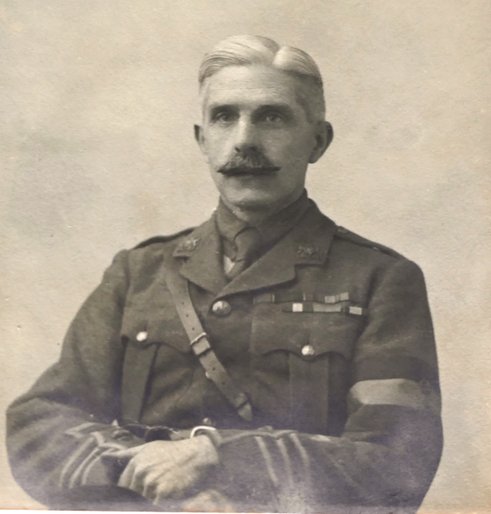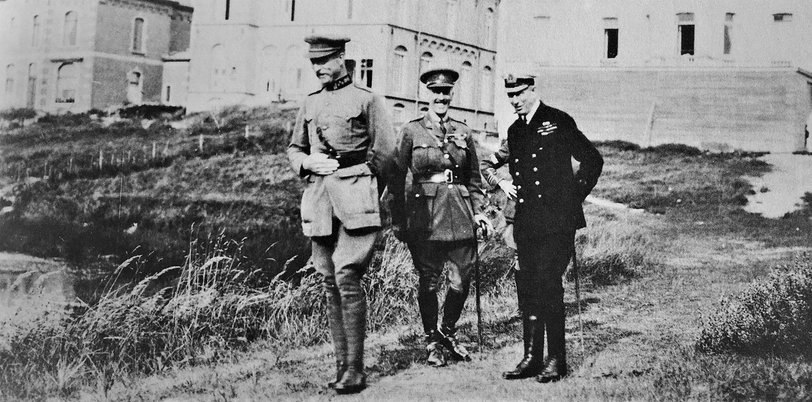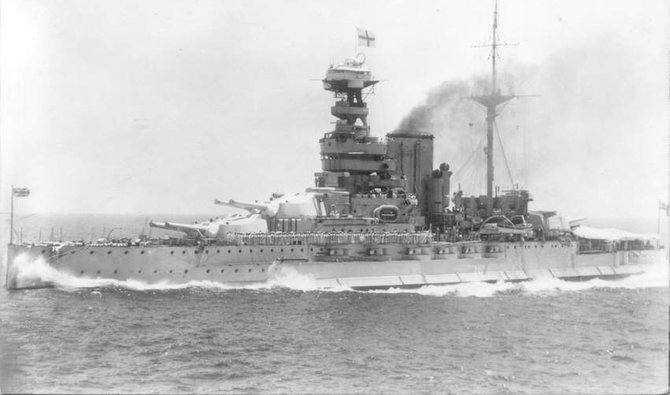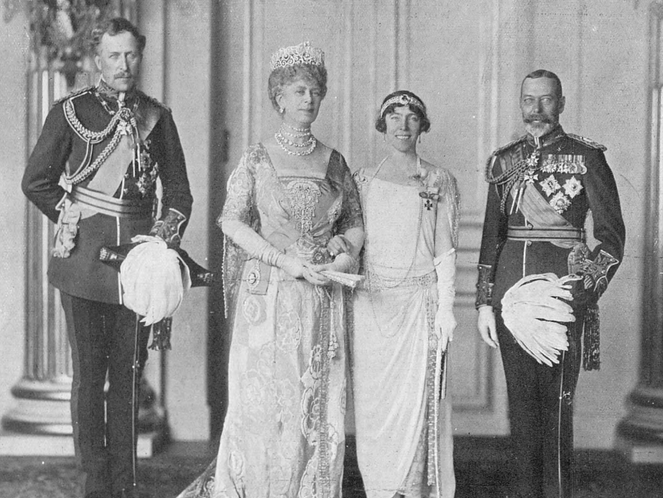MAJOR GORDON AS KING'S MESSENGER TO THE KING OF THE BELGIANS
"I was asked if I could undertake the duties of Belgian King's Messenger. I joyfully consented at once, feeling intensely proud to act as such. His Majesty appointed me Attaché à la Maison de Sa Majesté le Roi des Belges, and our War Office was pleased to officially consent to my accepting this service and I appeared in our Army List as such."
....
With these words, Major Gordon describes in his book how he became the Belgian King's Messenger. An honourable position he held from 1914 to 1922. As a confidant of the Belgian Royal Family, he was involved in many adventures and travelled to the front and England and met the most important people, such as members of the British Royal Family, several Lord and high-ranking military personnel from all allied nations. Beyond the call of duty, he participated in personal and private missions and escaped from bombardments and injuries. Colonel Seely said in the Foreword in Culled From a Diary that he had seldom known a man so cool and efficient under intense shell fire. Adding that long experience has taught him that in this type, serene courage resides.
The friendship between Gordon and King Albert is immortalised in the picture depicted on the right. This signed photograph by King Albert was given to Major Gordon with the decoration "Commander in the order of Leopold II". The fact that King Albert signed the picture with Albert and not with King or Roi means their friendship was beyond titles or work relations.
PREQUEL
On the 12th of October 1914, after the retreat of Antwerp, Major Gordon was asked to take official papers to the Admiralty in London. He left Ostend in an S.E.&C. Railway steamer (S.S. Ittica). When the ship reached the open sea, a German aeroplane attacked the steamer, but without doing any damage. A few hours later, Major Gordon disembarked in Dover, where a train was waiting for him. There he received a telegram that Winston Churchill, aka the First Lord of the Admiralty, wanted to speak with him as soon he arrived in London. Major Gordon was escorted to the Minister's room, where he had to report for about half an hour on the events that had taken place during the siege of Antwerp. He was then given until the following day to write up his report. Together with a shorthand-typist friend, they completed the task overnight. Two days later, Major Gordon could travel home for a brief holiday.
HOW IT BEGAN
After his brief holiday, Major Gordon was asked to fulfil a task in London for His Majesties of Belgium and afterwards travelled to La Panne, where the King and Queen had taken up residence. When he arrived at La Panne, he had a kind welcome from everyone and was guided to the three Royal villas. The first served as the personal household of the Royal family, the second a Gendarmes HQ and accommodation for some guests. Finally, the third was packed with luxuries and commodities for the sick and wounded in a temporary hospital nearby. Queen Elisabeth insisted on setting up a massive hospital in La Panne, housing some eight hundred patients; next to these pavilions were seventy baths with hot and cold water and some other pavilions used for laundries. It became the most up-to-date clinic on the Allied front and was staffed by good medical men and nurses from Europe. The clinic was named 'Ambulance L'ocean'.
PART OF THE HOUSEHOLD OF BELGIAN ROYAL FAMILY
By the end of May 1915, the weather on the Belgian coast cleared and Queen Elisabeth had let installed a large tent near the beach, in front of the Royal Villa, where she transacts much of her business and correspondence. Major Gordon was called many times to this tent in the afternoons, and at 4 P.M., they usually had tea with some bread and butter. At some point, a colony of rats appeared in front of the tent, and the queen tossed many scraps to them as if they were squirrels. The queen gained great amusement for this. Both the King and Queen were great lovers of animals.
In June 1915, Major Gordon was tasked to accompany Commandant Davreux, the official photographer at the Belgian HQ, to the Ypres district to take certain photographs. After their task, they went on to photograph the grave of Major Gordon’s good friend Colonel James Clark. Later as they drove back towards La Panne, they heard the music of bagpipes, and soon, they saw the first battalion of the Gordon Highlanders. Major Gordon was surprised that only one officer remained of the original lot that had left in England in August 1914 when his older brother was second in command. Later in the war, Commandant Davreux was killed by a sniper whilst has was photographing a huge shell hole. Major Gordon attended his funeral at Adingkerke.
By the end of June 1915, Major Gordon was back in England for a few days when he got the order to escort Princess Marie-José from her convent school in Essex to La Panne. At Victoria Railway station, he was given a telegram from Queen Elisabeth asking him to bring a thousand packs of playing cards. The train was to depart at 10 a.m, and it was now more than half past nine. Major Gordon succeeded in the task with just a few minutes to spare. During the crossing of the Channel, he had lunch with the Princess on deck and was later received by the Queen and Prince Leopold. The Queen later said to Major Gordon that King Albert I was in the trenches the day before, and he had asked the men if they wished he could send them anything. The soldiers asked for playing cards, and unknown to the King The queen sent the telegram in the middle of the night. The Queen had expected that Major Gordon would not be able to deliver the cards on such short notice, but Major Gordon kindly replied that the cards were on their way and would be there in an hour. The Queen and the King were delighted, and an officer of the Royal household took the cards to the trenches the following day.
Major Gordon had the privilege of taking many walks with King Albert on the shores of La Panne, and on one occasion, they talked about fidelity. Gordon remarked how the King was loved by his soldiers, on which King Albert replied:
"Major, there are various degrees of fidelity. The finest example was the faithfulness of your countrymen to their Prince when he was being hunted in the Western Isles of Scotland after the (battle of) Culloden (1746). With a huge reward for his capture, not a single Scotsman dreamt of being a traitor to one they even did not know except by name, but to whom they felt their loyalty was due". - King Albert I
Major Gordon and the Belgian princes Leopold and Charles and Princess Marie-José of Belgium on the steps of the villa in La Panne
AWARDED WITH THE BELGIAN CROIX DE GUERRE
King Albert, I awarded Major Gordon the Belgian Croix de Guerre in person. It happened on an evening when King Albert took Major Gordon's hand and spoke the following words:
"Ah, Major, I wish to award you our Croix de Guerre, for you have done devoted service to our soldiers and us, and it is also in acknowledgement of your bravery at Antwerp. It affords me great pleasure to give this" - King Albert I -
After the speech, King Albert opened a small case, taking out the decoration he pinned it on Major Gordon's tunic. All the Household Officers congratulated him and insisted he wore the award throughout dinner that evening.
THE LEGEND
Once on one of his returns from London towards the end of 1917, Major Gordon was told by a member of the Royal Household a story about King Albert. During a visit by one of the Belgian ministers to King Albert, the minister told the King that on his way, a soldier had hailed his car to stop to ask for a lift. The minister declined the request because he did not wish to be seen driving with a private. King Albert replied:
"I am often stopped in the same way and am always happy to grant the request"
Major Gordon witnessed one of these occasions when the King’s car was hailed one afternoon by a very young British officer who begged for a lift. King Albert replied: "Jump in behind". The front seat was occupied, and a member of the Military Household was in the back. The young officer remarked how fast and well the driver handled the car. The member of the suite told him quietly that it was the King who was at the wheel. The poor young officer almost collapsed and begged to be let out at once, but his request was denied. King Albert, I enjoyed the situation immensely.
ROYAL VISIT TO ENGLAND
Queen Elisabeth visited England early in 1917. She asked Major Gordon if she could meet his wife on this occasion. The Queen and her lady-in-waiting, Countess Ghislaine de Caraman Chimay, spent a couple of hours at his home.
In July 1918, Major Gordon received the telegram that the King, the Queen, a lady-in-waiting, two members of the Military Household and four servants would like to arrive in Folkestone soon, and the King expected that Major Gordon would arrange hotel accommodation. The visit was booked because of the Silver Jubilee of King George's V and the Queen of England’s wedding, which was celebrated with a Thanksgiving Service in St Paul's Cathedral on the 6th of July 1918. Major Gordon rushed to inform Buckingham Palace of the arrival of King Albert and Queen Elisabeth and was received by Lord Athlone at the palace and was later joined by Princess Alice and Lord Stamfordham. Later, Lord Stamfordham asked Major Gordon to drive with him to Lord Curzon to tell him the news. Lord Stamfordham then informed Major Gordon that the whole suite of King Albert must be brought directly to Buckingham Palace on the 6th of July, and they had to arrive precisely at two minutes past two. Not before or after the exact time. Major Gordon was given two special motor cars by the Under Secretary of State of War and a green pass so he could drive anywhere without being stopped. Major Gordon secured rooms at the Grand Hotel in Folkestone and then met Admiral Roger Keyes in the harbour while they waited for the arrival of their Majesty's. Major Gordon was told that the King and Queen were coming by separate aeroplanes, and it was not for long before they landed. The company of the Military household and servants arrived that evening by the troop boat, just for dinner. All the Belgian baggage had gone astray, and emergency necessities had to be purchased in Folkestone that evening. The King and Queen went to bed early. In the early morning, King Albert knocked on Major Gordon's room in night attire, looking rather uncomfortable. He explained to Major Gordon that the gift for the Silver Jubilee had been left behind, and he asked Major Gordon if he could purchase something at once. Major Gordon had great difficulty not smiling when he told King Albert that no shops would be open for more than an hour and that nothing sufficient for the occasion could be found in the small town of Folkestone. The only solution Major Gordon could come up with was to contact Lord Curzon, who was still in bed and a long sleeper. Major Gordon rang him up in trepidation, and Lord Curzon immediately answered the phone. After Major Gordon had explained the quandary the King and Queen were in. Curzon replied that he would rise at once and go to New Bond Street to buy something. After a budget had been given, Lord Curzon asked how the present would be delivered to King Albert and Elisabeth. Major Gordon replied that it should be given to the Chief Police Inspector at Buckingham Palace, who was a good friend of Major Gordon. The Chief Police Inspector was informed that the purchase would only be handed to Major Gordon in person once the Royal visitors entered the gates at Buckingham Palace around two o clock. Major Gordon was very anxious in the morning of the departure to London and left around ten o clock. He entered London at 1.50 p.m. Just in time to enter the gates of Buckingham Palace at 2 p.m., where his friend, the Chief Police Inspector, stood ready with the gift he quickly handed him. The King and Queen entered the inner quadrangle exactly at 2.02 p.m., just as requested by Lord Stamfordham, who greeted Maj Gordon with the words: "Well done, Gordon!" while clapping him on the back. Lord Stamfordham later explained that the normal Grenadier Guards had to be replaced by the Royal Scots Guards, who were selected for their height and to honour King Albert. The Royal Scots Guards could only be in position at two a clock, so therefore the arrival of the King had to be at 2.02 am.
King Albert, Major Gordon and (?) standing in front of the Royal Villas in La Panne.
VISITING SCOTLAND
While in England, King Albert wished to visit Scotland and see the Grand Fleet. He and his suite, together, with Lord Athlone and Sir Charles Cust, went to visit Edinburgh. They boarded the train at King's Cross Railway Station and Major Gordon was given the message that the king insisted that he should escort him all over the city. When they arrived at Edinburgh the General Officer Commanding in Chief Scottish Command and his staff, together with a Guard of Honour, were awaiting the King on the platform. Major Gordon took King Albert to Edinburgh Castle where a service battalion was drilling. Their Commanding officer had just returned from Ypres, recognised King Albert and called the battalion to attention. King Albert was pleased, but said to Major Gordon later "Major, you are to blame for this. Your brassard (armband) has given me away!". Later, the King went to view the Grand Fleet and Queen Elisabeth asked if she could send a picture of herself to her namesake ship, the H.M.S. Queen Elisabeth. The picture was taken and prominently fixed on deck with the following notice:
H.M. Queen Elisabeth
to
H.M.S. "Queen Elizabeth"
9.7.1918
A TRIUMPHANT RETURN
On 17 October 1918, when Major Gordon was at home, he received a telephone message from King Albert from Ostend. The Germans had abandoned the city, and King Albert and the Queen had been taken there by Admiral Keyes in a torpedo boat. Major Gordon received the massage to bring Prince Leopold at once to Belgium. While Prince Leopold was studying at Eton College, Major Gordon picked him up, and both stayed in Gordon's house until the following day when they headed for Dover. Here they boarded the destroyer "Murray" under the command of Lieutenant-Commander F.H.G. Dalrymple Hamilton. Later on, Major Gordon went briefly back to London to get Prince Charles for the approaching return of King Albert in Brussels. King Albert had promised Major Gordon in his early days as King's Messenger that if the war were won, he would march through Brussels and be in his suite.
After the Armistice, Major Gordon was informed that King Albert’s triumphant return to Brussels was set for the 22nd of November 1918, so he left his home for Brussels two days prior. Major Gordon arrived with General Henry Wilson, who had accompanied him on his trip at Laeken, at eight o clock that evening. At 11.30 am on the 22nd of November 1918, the procession began at Meulebeeck. After a long procession through Brussels, King Albert and Prince Leopold entered the Royal Palace and guests were seated in the square. Major Gordon was seated between Mayor Adolph Max and Cardinal Mercier. Later he was invited for lunch in the palace. The next day Major Gordon was again invited to a magnificent banquet at the Spanish Embassy that was given by Ambassador Marquis de Villalobar, who Major Gordon knew well.
In the following days, Major Gordon visited major Belgian cities such as Leuven, Waterloo and Maines, where he spent an hour with Cardinal Mercier. Major Gordon had also visited the grave of Nurse Cavell in Brussels.
THE ENDING OF A LEGEND
After the war, Major Gordon was given a secret task in the Netherlands near Breda, of which he does not provide details in his book 'Culled from a diary'. He only mentioned that as he was returning, a Dutch guard aimed his rifle at him and forced him to stop. It was one of a few incidents where Major Gordon had to fear for his life. After the event, Major Gordon looked for the grave of the second son of his boss, the Duke of Wellington. Captain Lord Richard Wellesley, was killed in action in the First Battle of Ypres and was buried in the German cemetery at Kruiseik. When searching in the district, he met up with Major General Thomas Tait Pitman, who was looking for the grave of a young relative who had been in the Royal Air Force. Pitman found the tomb of Captain Lord Richard Wellesley but could not find his relative in the graveyard and departed to the next one.
Because of the Armistice, Major Gordon had to make fewer journeys to Belgium, but these were by no means ended. He escorted Admiral Roger Keyes and his wife to the Palace in Laeken, and one evening Major Gordon was in the study of King Albert when the King expressed his hope that his duties were not yet ended and how grateful he was.
In 1920 Major Gordon received a message that King Georges V had personally attached him to the British suite for the Belgian Monarch's State Visit to London. The visit lasted from Monday, 4th of July, until Friday, 8th of July. On this occasion, King Albert decorated Major Gordon with the Commander's Cross of the Order of Leopold II, together with a signed picture of his latest portrait (In the King’s Messenger’s Collection).
Two years after King Albert and Queen Elisabeth made their visit to England, the British Monarch announced a State Visit to Brussels and Major Gordon was asked by the Grand Marshal of the Belgian Court, on behalf of King Albert, if he could be in Brussels for the occasion to be held on the 7th of May. Major Gordon was driven to the Palace of Laeken, where he dined with the Royal Family. The next day they went together to the Royal Palace in the city. King George V and Queen Mary arrived in the afternoon, and the whole day was filled with celebrations. The following days were occupied with visits to various towns and museums, such as the Colonial Museum of Tervuren.
Major Gordon recounts a time in his book with Princess Marie-José. While waiting for directions from King Albert, Princess Marie-José asked him to come and see a rabbit, which a captain gave her. The rabbit was named after the ship, "Marshal Soult", on which the Princes had given the rabbit. The next day the rabbit gave birth to six child rabbits. "Marshal Soult" was later in the garden of Hardelot, and because Major Gordon was concerned it would escape, he called out "Soult" many times, but naturally, with no response from the rabbit. Afterwards, Princes Marie-Josée came to the scene and said, "Major Gordon, no wonder my rabbit will not obey you; her name is Marshal Soult and not Soult. It is just as if I were to speak with you as 'Gordon' and no one would know who I meant, but if I spoke of Major Gordon I would be understood at once because everyone knows who Major Gordon is." After these words from the princes, Major Gordon stood reprimanded.
Princes Marie-Josée was an animal lover with an extensive collection of woolly animals. Her prime favourite was a dog called Fifi. Fifi was fallen into the sea on the Princess's visit to the ship Marshal Soult. Fifi was later given to Major Gordon after she was given her rabbit, who took it to his home and had it in a special place under a glass case. When later the engagement was announced of the Crown Prince of Italy and Princess Marie-José, Major Gordon wanted to give the couple a unique wedding gift. He sent Fifi to Pullar's, and he returned a new dog. He then bought Scot's bonnet brooch, set with a bright purple Cairngorm, and attached it to a pale blue ribband, which he put around Fifi's neck. He then packed it and gave it to Baron Moncheur, The Belgian Minister in London, to deliver it to the Royal Family in Laeken. Major Gordon was given a touching acknowledgement afterwards.
PHOTO FROM THE ROYAL STATE VISIT FROM ENGLAND TO BELGIUM. 1922

